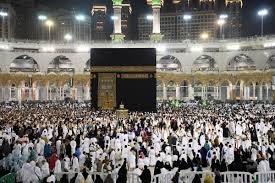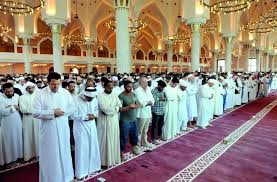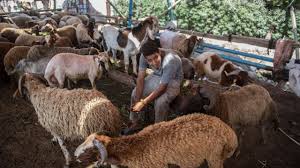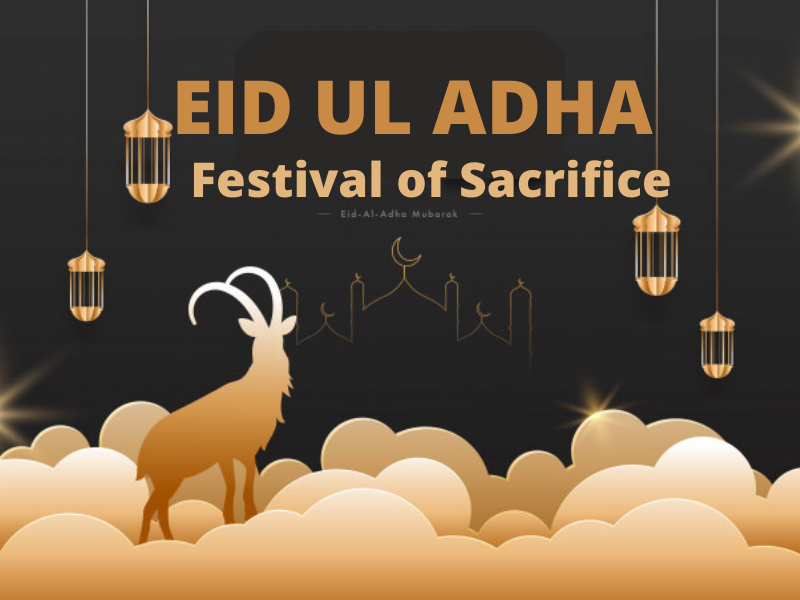Eid-al-Adha “The Festival of Sacrifice”
Eid al-Adha is the second major Muslim festival after Eid al-Fitr, which marks the end of Ramadan, the month of fasting.
Muslims around the world have begun celebrating the annual festival of Eid al-Adha – the Festival of Sacrifice – which falls on the 10th day of Dhul Hijjah, the 12th and last month of the Muslim lunar calendar.
The meaning of ‘Eid-al-Adha’
Eid al-Adha, which in Arabic literally means the “festival of sacrifice”, commemorates the story of the Muslim Prophet Ibrahim’s test of faith. Muslims believe Ibrahim was commanded by God to sacrifice his son, Ismail. The belief holds that God stayed his hand, sparing the boy, and placing a ram in his place. In the village of Mina, near the Muslim holy city of Mecca, it marks the day on which millions of pilgrims perform the symbolic stoning of the devil. They will then circle the cube-shaped Kaaba in Mecca, Islam’s most sacred site, before departing. The Kaaba represents the metaphorical house of God and the oneness of God in Islam. Observant Muslims around the world face towards the Kaaba during the five daily prayers.
End of Hajj
The day also marks the end of Hajj, the five-day-long pilgrimage Muslims undertake to cleanse the soul of sins and instill a sense of equality and brotherhood among Muslims.

Any Muslim, who has the financial means to undertake the pilgrimage, is expected to take part in it at least once in their lifetime and constitutes one of the five pillars of Islam. About 2.5 million pilgrims from around the world flock annually to the cities of Mecca and Medina in Saudi Arabia for the ritual.
During the last three days of Hajj, male pilgrims shave their heads and remove the white terrycloth garments worn during the pilgrimage. Women cut off a small lock of hair in a sign of spiritual rebirth and renewal.
Eid prayers
Performing extra prayers in the morning are how most Muslims begin celebrating Eid. Mosques are packed with worshippers with outside arrangements made to accommodate large groups of people.

Sacrificing an animal
The day is marked with the sacrifice of an animal, usually a goat, sheep, or cow, and the distribution of the meat among neighbors, family members, and the poor.
The occasion is marked by the sacrifice of an animal that Muslims can eat – a goat, sheep, cow or camel – by those who can afford to do so.

In many parts of the Muslim world, special livestock markets are set up for people to buy an animal for the Eid sacrifice.
Distribution of meat
The animal sacrifice comes with an element of charity, as the person paying for the sacrifice is required to distribute part of it to others. The meat of the sacrificed animal is divided among three groups: the person sacrificing it and their immediate family, extended family and friends, and those in need.
Some Muslims will pay the value of an animal to one of a number of Muslim charities around the world that collect funds for remote animal sacrifices, distributing the meat to underprivileged groups – including refugees, the elderly and disabled people.
The sunnahs of the day of Eid
The Sunnahs of the day of Eid include:
- To adorn oneself according to the shariah law by:
- Performing Ghusl.
- Brushing one’s teeth, using a miswak if possible
- Applying perfume
- Wearing the best clothes that one possesses and white colored cloths are preferred.
- To wake up early for preparing for the sunnahs to be performed on this day
- To reach the place of prayer early
- To delay eating until after the prayer of Eid al Adha
- To walk when reasonably possible without any kind of hardship.
- To give the takbirs of Eid.
To return from Eid prayer taking a different route from the one that a person takes while reaching the place of prayer as established by the prophet’s practice (PBUH)



